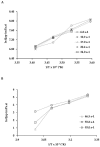Determining the Potential of Haematococcus pluvialis Oleoresin as a Rich Source of Antioxidants
- PMID: 31717936
- PMCID: PMC6891815
- DOI: 10.3390/molecules24224073
Determining the Potential of Haematococcus pluvialis Oleoresin as a Rich Source of Antioxidants
Abstract
Haematococcus pluvialis is known to be a natural source of antioxidants for numerous applications. In this study, an oleoresin rich in carotenoids extracted by supercritical CO2 treatment of H. pluvialis was extensively characterized for its antioxidant capacity. Carotenoid content, fatty acid profile, total phenol content, antioxidant capacity, and viscosity of the oleoresin were determined with the aim of ascertaining the potential of the oleoresin in terms of its antioxidant content for food applications. The oleoresin contained 96.22 mg/g of total astaxanthin (which includes free astaxanthin and astaxanthin esters) and mostly included unsaturated fatty acids (~78% of total fatty acids). High total phenol content and ferric reducing antioxidant potential indicated high antioxidant capacity, but oxygen radical absorbance capacity was lower compared to the oleoresin samples obtained from other species. The oleoresin was a non-Newtonian fluid since it had shear-thinning (pseudoplastic) and shear-thickening (dilatant) flow. Therefore, the H. pluvialis oleoresin is a potential alternative in developing functional ingredients for designing healthy food products. To the best of our knowledge, this is the first study that has reported an extensive characterization of the antioxidant properties of a microalgal oleoresin obtained by means of supercritical CO2 fluid extraction.
Keywords: Haematococcus pluvialis; antioxidant capacity; astaxanthin; oleoresin; phenol content; supercritical fluid extraction; viscosity.
Conflict of interest statement
The authors declare no conflicts of interest.
Figures



References
-
- Michalak I., Chojnacka K. Algae as production systems of bioactive compounds. Eng. Life Sci. 2015;15:160–176. doi: 10.1002/elsc.201400191. - DOI
-
- Amaro H.M., Guedes A.C., Malcata F.X. Science Against Microbial Pathogens: Communicating Current Research and Technological Advances. Volume 3. Formatex Research Center; Badajoz, Spain: 2011. Antimicrobial activities of microalgae: An invited review; pp. 1272–1284.
-
- Gouveia L., Coutinho C.P., Mendonça E., Batista A.P., Sousa I., Bandarra N.M., Raymundo A. Functional biscuits with PUFA-ω3 fromIsochrysis galbana. J. Sci. Food Agric. 2008;88:891–896. doi: 10.1002/jsfa.3166. - DOI
MeSH terms
Substances
Grants and funding
LinkOut - more resources
Full Text Sources
Medical

